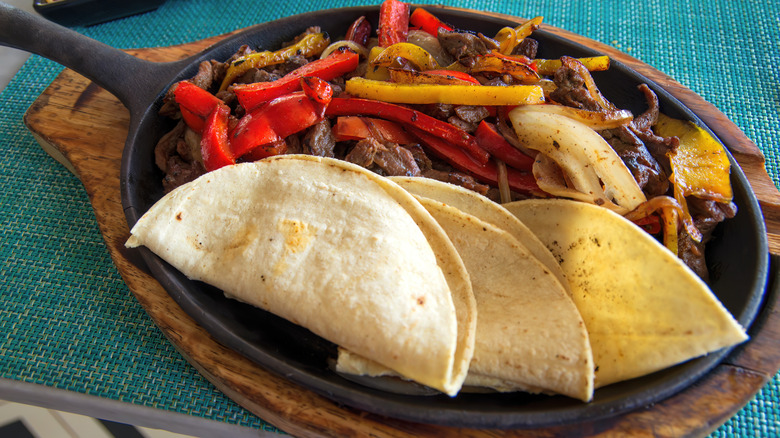What The Tortillas Really Say About The Quality Of A Mexican Restaurant
One of the pleasures of a good meal at a Mexican restaurant is getting to try its tortillas. Tortillas are a chance for a place to really express themselves on the plate, which is why Nayomie Mendoza, co-owner of Cuernavaca's Grill in LA, says you can learn a lot about a restaurant through this one simple staple.
Tortillas are so much more than just a vessel for the taco contents. "Tortillas are the foundation to our cuisine," Mendoza told Food Republic. "A warm, fresh tortilla, that instantly rolls tells a story- it's about technique and care." It's easy to determine with a single bite if the tortillas have been made fresh or prepared ahead of time. Home cooks who have tried their hand at making tortillas will know that one of the biggest mistakes you can make with homemade tortillas is preparing the masa balls before you're ready to actually cook them. Having the wrong amount of water is an even more common mistake, but if you're not ready to immediately put the dough to the griddle, forming the dough balls can be a recipe for dry, dense disaster.
A good tortilla, according to Mendoza, should engage all the senses. "You should be able to not only taste the corn, feel the softness as it melts on your tongue, smell the aroma when it hits your table, but it should be able to roll instantly, – I always say that if a tortilla rolls smoothly, it is very telling about a Mexican restaurant's quality."
What to look for in restaurant tortillas
When it comes to judging the quality of the restaurant based on the tortillas, Nayomie Mendoza says that it's about more than just the binary of homemade or store-bought. "Sourcing matters- like heirloom corn or stone-ground masa. Regional style matters too- a Sonoran flour tortilla is different from a Oaxacan corn one," she says.
Knowing what region or style of taco goes with corn or flour tortillas, respectively, will help you understand whether you're getting the most well-thought-out, authentic preparation of the dish possible. For example, corn tortillas are best for fish tacos, with deep roots in Baja and Sinaloa culture as well as a sturdiness that can handle the fish and toppings without getting soggy. Meanwhile, breakfast tacos and Tex-Mex styles of dishes, such as fajitas, are better accompanied by flour tortillas.
At the end of the day, there are just some things restaurants can fake and some things they can't. Flavor can be supplemented with salt, butter, or MSG, burrito sizes can be inflated with rice, beans, or lettuce, but there's simply no substitute for quality ingredients and careful preparation. That's why Mendoza says, "... Above all, it's about intention. Are they honoring the craft, or just going through the motions?"


